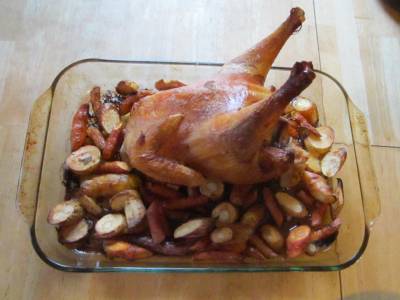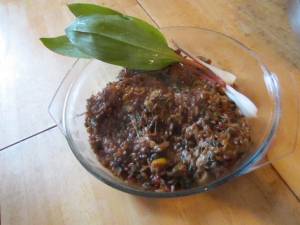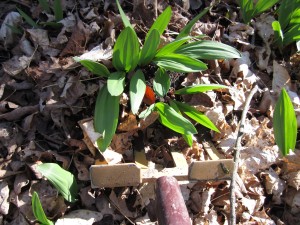Having been vegetarian since I was about 20, I haven’t cooked much meat… until now! A lot of research suggests that pastured cattle – in contrast to grain-fed factory raised beef – contributes significantly to carbon storage and helps build healthy soil. I include our free range chickens, that consume all our excess food, weeds, undesirable insects, and lots of other stuff, in this helpful livestock category. I decided a couple of years ago to include a little bit of such ethical meat in my diet, but it wasn’t until I came to Whole Circle Farm that this became a regular reality… and this Wednesday I cooked my first chicken!
It was pretty delicious – as Whole Circle Farm chicken hardly can be otherwise. I roasted the chicken for about an hour and a half, with wild leeks, parsnips and carrots.

 The chicken was an accompaniment for what I really wanted to make: spelt risotto.
The chicken was an accompaniment for what I really wanted to make: spelt risotto.
Fresh vegetable stock, wild leeks, summer squash from the freezer, butter, and grated parmesan cheese, and of course – in lieu of rice – spelt berries.
I found some spinach still growing in the greenhouse, where our old spinach beds have been taken over by seed starts, for a delicious spinach salad.
Naturally, this was a completely farm-sourced meal – except for the cheese from Organic Meadow. … But, now that the calves have started to arrive, we have a lot more milk. Katie and I celebrated by making yogurt tonight, and I see cheese – and more all-farm meals – in the near future!




